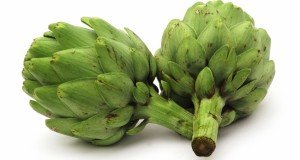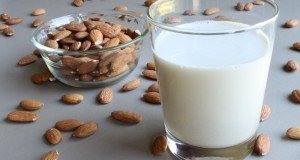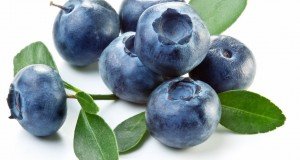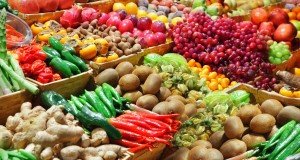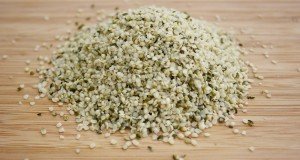Beat type 2 diabetes with the power of antioxidant-rich foods
 (NaturalHealth365) Type 2 diabetes, which affects well over 500 million people worldwide, has reached epidemic proportions. Conservatively speaking, 1 in 10 U.S. adults has type 2 diabetes, and Western medicine offers little hope for healing this condition. For example, does anyone really believe that taking insulin is the best way to resolve blood sugar imbalances? (Hint: the solution can be found on your plate.)
(NaturalHealth365) Type 2 diabetes, which affects well over 500 million people worldwide, has reached epidemic proportions. Conservatively speaking, 1 in 10 U.S. adults has type 2 diabetes, and Western medicine offers little hope for healing this condition. For example, does anyone really believe that taking insulin is the best way to resolve blood sugar imbalances? (Hint: the solution can be found on your plate.)
This devastating condition shows no sign of slowing down anytime soon. In fact, health experts predict that well over 600 million adults will develop diabetes by 2030. As scientists continue to search for more effective methods of prevention and treatment, studies reveal that a diet high in antioxidants — such as fresh fruit, vegetables, and tea — significantly lowers the risk of type 2 diabetes.
Intelligent study reveals that type 2 diabetes can be avoided with the right kind of diet
Fruits and vegetables contain phytonutrients, or plant chemicals, known as flavonoids. These natural compounds have powerful antioxidant effects, scavenging harmful free radicals and reducing the oxidative damage contributing to disease.
Extensive studies have explored the anti-diabetic benefits of individual antioxidants found in fruits and vegetables, but researchers took a slightly different approach to this study. To get a more comprehensive view of the relationship between food and diabetes, they examined the benefits of an overall high-antioxidant diet.
The 15-year study, published in Diabetologia (the journal of the European Association for the Study of Diabetes), involved over 65,000 women between the ages of 40 and 65. Researchers analyzed questionnaires filled out by participants and found that the women with the highest amounts of antioxidants in their diets enjoyed a 27 percent reduction in risk of type 2 diabetes – a very substantial benefit.
The scientists reported that the odds of developing diabetes diminished as antioxidant consumption increased. They noted that antioxidant capacity may play an important role in reducing the risk of diabetes in middle-aged women.
In other words – consistently making a series of simple, healthy dietary choices can dramatically lower the risk of a potentially life-threatening and costly disease.
The secret to success: Antioxidants work – at a molecular level – to fight diabetes
The study is not the only research showing the amazing effects of dietary flavonoids.
Researchers at the Harvard School of Public Health found that blueberry anthocyanins significantly lower the risk of type 2 diabetes.
In a study published in Nutrition and Metabolism, researchers set out to evaluate the biological action and therapeutic potential of dozens of dietary flavonoids and anthocyanins – and concluded by stating unequivocally that the phytochemicals protected against diabetes.
The team reported that flavonoids combat diabetes by helping to maintain blood glucose levels, promoting glucose uptake, and stimulating insulin production from the pancreas’s beta cells.
In addition, flavonoids improve the performance of fat-burning enzymes, decrease LDL cholesterol, and reduce levels of pro-inflammatory cytokines such as interleukin. They significantly raised levels of a pair of antioxidants and disease-fighting enzymes, such as superoxide dismutase and glutathione. They also helped to decrease advanced glycation end products. AGEs are toxins that can trigger and worsen diabetes.
The list of anti-diabetic benefits from flavonoids is truly stunning. It is hard to believe that an ordinary apple or a bowl of blueberries can harbor this type of disease-fighting therapeutic potential – but scientific research has shown it to be true.
Fresh fruits and vegetables offer a rich bounty of flavonoids
Virtually all fruits and vegetables are good sources of antioxidant flavonoids. And these compounds have a synergistic effect – meaning they complement and potentiate each other’s powers.
Apples, grapes, and onions are rich in the flavonoid quercetin, while citrus fruits contain the flavonoids hesperidin, tangeritin, kaempferol, and naringenin.
Cruciferous vegetables such as broccoli and kale contain kaempferol and luteolin. At the same time, blueberries and other purplish-blue plant foods are your best bet for obtaining anthocyanins, beneficial plant pigments with anti-diabetic effects. Anthocyanins are also found in cranberries, cherries, blackberries, currants, raspberries, mulberries, purple grapes, red cabbage, and eggplant skins.
Orange vegetables, such as carrots and squash, contain healthy amounts of beta-carotene.
Keep in mind: fresh fruits and vegetables tend to be high in vitamin C, a potent antioxidant. They are also naturally high in dietary fiber, which can help ward off the obesity that contributes to diabetes.
Enlist fresh, organic fruits and vegetables as your “first line of defense” against diabetes
The roster of foods that can help you fight diabetes is extensive – and delicious!
In addition to the foods already listed, flavonoid-packed fare to put on the menu includes plums, prunes, walnuts, strawberries, parsley, celery, onions, peppers, eggplants, green leafy vegetables and hazelnuts.
Antioxidant-rich beverages include teas – black, green, chamomile – red wine (in moderation), and coffee, which has been shown in studies to protect against type 2 diabetes.
Naturally, it would be best to choose organic varieties to avoid unwanted exposure to toxic chemicals – used in the growing process of most commercial brands.
Experts recommend eating fruits and vegetables raw, lightly steamed, or sautéed for maximum antioxidant benefits. However, since the antioxidant capacity of carrots and celery increases when they are lightly cooked, steaming them is a smart choice.
Researchers have long reported that diets high in fruits and vegetables are strongly associated with a lower risk of developing heart disease and cancer – the two leading causes of death in the United States. Now, thanks to the latest studies, we know that putting fresh fruits and vegetables on the menu can also help us fight another deadly disease.
Editor’s note: For a healthy way to support your diet and lifestyle, take a high quality Mutivitamin from LuvByNature for Men and here’s one for Women.
Sources for this article include:



